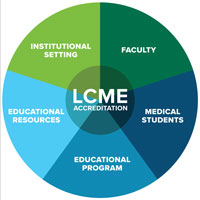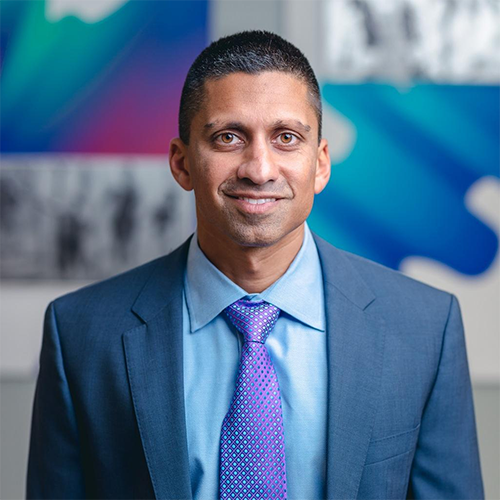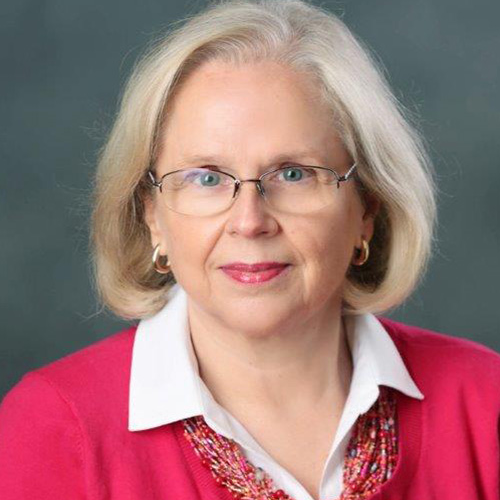 An LCME site visit review isn’t about perfection—it’s about self-awareness and institutional leadership’s ability to evolve with national standards.
An LCME site visit review isn’t about perfection—it’s about self-awareness and institutional leadership’s ability to evolve with national standards.
In Part 1 of this LCME series, Craig Hoesley, M.D., senior associate dean for Medical Education, discussed changes that have come to the Heersink School of Medicine from previous LCME accreditation visit and the institutional self-reflection that takes place leading up to a site visit.
Earlier this year, the school’s LCME Executive Committee submitted three key pieces to site reviewers in advance of our visit: the Data Collection Instrument (DCI), a large database of information related to LCME standards; the Independent Student Analysis, a student-led survey of the learning environment and educational programs; and the Self-Study report, an overview assessment of institutional strengths and challenges, along with strategies to address the identified challenges.
Setting the charge
 Irfan Asif, M.D.To undertake the reflective process and develop the Self-Study report, the LCME Executive Committee tapped Irfan Asif, M.D., associate dean for Primary Care & Rural Health and chair of the Department of Family and Community Medicine, and Lanita Carter, Ph.D., assistant professor and director of Medical Education and Student Services for the Huntsville Regional Medical Campus, as co-chairs for the Self-Study Task Force—a group of 26 leaders across the enterprise, including faculty, staff, student and resident members, along with representatives from UAB Hospital, Birmingham VA Medical Center, Children’s of Alabama and the UA Health Services Foundation.
Irfan Asif, M.D.To undertake the reflective process and develop the Self-Study report, the LCME Executive Committee tapped Irfan Asif, M.D., associate dean for Primary Care & Rural Health and chair of the Department of Family and Community Medicine, and Lanita Carter, Ph.D., assistant professor and director of Medical Education and Student Services for the Huntsville Regional Medical Campus, as co-chairs for the Self-Study Task Force—a group of 26 leaders across the enterprise, including faculty, staff, student and resident members, along with representatives from UAB Hospital, Birmingham VA Medical Center, Children’s of Alabama and the UA Health Services Foundation.
“We were charged with reviewing what we put together in the DCI against the LCME standards,” Carter said. “This was a big charge, because we were not just asked to read 93 elements and decide if we answered the questions appropriately in the DCI; instead it was reading thousands of pages of information and answering the greater questions of whether we are meeting the standards, how well we are meeting the standards and taking a step back to examine the work of our school.”
The task force met monthly from April through October 2021 to go through the LCME documentation. Asif said he and Carter approached the review by separating the elements into five content areas – Institutional Setting and Education Resources; Faculty; Medical Students; and Educational Program—and assigning a small group to deep dive into the different areas.
“We selected co-chairs for each of the different areas and then built teams around those leaders, using balance of representation as our main focal point and making sure everyone participating would have a chance to contribute meaningfully to the conversations,” Asif said.
Carter added that she and Asif chose leaders who would work in each of the focus areas who could bring different perspectives and experiences to their group.
After the kickoff meeting in April 2021, each monthly meeting over the next 5months was a deep dive into a content area, led by the small groups. Each small group also produced a 2–3-page document to capture the sentiment of their group, along with feedback from the larger task force.
Asif said the documents developed by the small groups helped create a larger 15-page overview, which was then whittled down into the final five-page Self Study report submitted in the school’s LCME survey packet.
“From an LCME standpoint, we needed to produce a five-page summary report to submit for the review, but there is more to a self-study than the final documents,” Asif said. “That is why we asked the groups to produce the 2-3 pages each: it served as a roadmap for examining what we could do better, how we prioritize those opportunities and how we can strive for excellence beyond what we are required to do to meet national standards.”
Recognizing our strengths
 Lanita Carter, Ph.D.Both Asif and Carter pointed out a key strength of our school is the leadership of Selwyn Vickers, M.D., FACS, senior vice president for Medicine, dean of the Heersink School of Medicine and CEO of the UAB Health System, along with strategic alignment of our mission areas.
Lanita Carter, Ph.D.Both Asif and Carter pointed out a key strength of our school is the leadership of Selwyn Vickers, M.D., FACS, senior vice president for Medicine, dean of the Heersink School of Medicine and CEO of the UAB Health System, along with strategic alignment of our mission areas.
Asif also cited our commitment to diversity and efforts around student recruitment, like our partnerships with Alabama HBCUs for the Burroughs Wellcome Scholars Early Assurance Program.
Another key strength is the development and growth of our service learning programs.
“Service learning finds ways to take what our students learn in the classroom and reinforce those concepts in the community. I think what we have is outstanding,” Asif said. “Dr. Caroline Harada and other educators really do a phenomenal job reinforcing that education.”
Carter cited the management and oversight of the curriculum by the Medical Education Committee and team in Undergraduate Medical Education (UME), our focus on quality improvement and the expansion of the Academic Success program as key strengths.
Other programs and initiatives highlighted are the opportunities for interprofessional education and collaboration with other health professional schools; our successful dual degree programs; and the efforts to expand scholarship support and debt management counseling, which help our students graduate with significantly lower debt than the national average for U.S. medical schools.
Managing opportunities for change
The elimination of the USMLE Step 2 Clinical Skills exam, Carter said, has left a gap in how medical schools measure students’ clinical skills development.
“We have stepped up now to try to fill that gap by providing more formal clinical assessments, the Entrustable Professional Activities (EPAs) and the new Tableau platform that is integrated as part of the students’ rotations, enabling them to easily use this to measure what they do,” she said. “Allowing our faculty to assess students’ clinical encounters on site is very helpful, bolstered up by the OSCEs throughout the year where we can measure how our students are making progress.”
Teams in UME, Continuous Quality Improvement and Medical Education Information Services are working together to create Tableau dashboards to assess clerkship grading metrics, which will allow for monitoring of fairness and equity in grading, to address student feedback.
Asif said comparability across the clinical campus experiences is an area where we have opportunities to make more changes.
“I think we all want to make sure that the students get a good experience on all of clinical campuses, and there are ways we can be intentional to share information and work as one unit,” he said.
Changes were made in 2021 to the school’s ReportIt website, addressing student concerns on transparency and confidentiality for the reporting mechanism. Medical education leaders, in partnership of the Office of Diversity and Inclusion, are holding student focus groups to gain more information about patterns and sources of mistreatment. Leaders are also planning education efforts around policies for interacting with medical students and instituting bystander trainings in later this year.
Other challenge areas included educational space in Volker Hall, which is currently undergoing renovation to add team-based, active learning space on the building’s second floor.
⋅⋅
Though the Self-Study efforts took significant time and work from the participants, both Carter and Asif said they enjoyed working with leaders from across the enterprise to accomplish their goals for the task force.
“It was amazing to see people come together for such a massive effort,” Asif said. “I’m grateful to all members of the Self-Study Task Force and the LCME Executive Committee for their work on the report. I’m thankful we could create an environment where our task force felt comfortable to share and to disagree—all in the name of trying to make our school the best it can be.”
In advance of the UAB Heersink School of Medicine’s virtual accreditation site visit April 11-13, we’re sharing how LCME accreditation has shaped the medical school. Read part one of the two-part series on School of Medicine news.